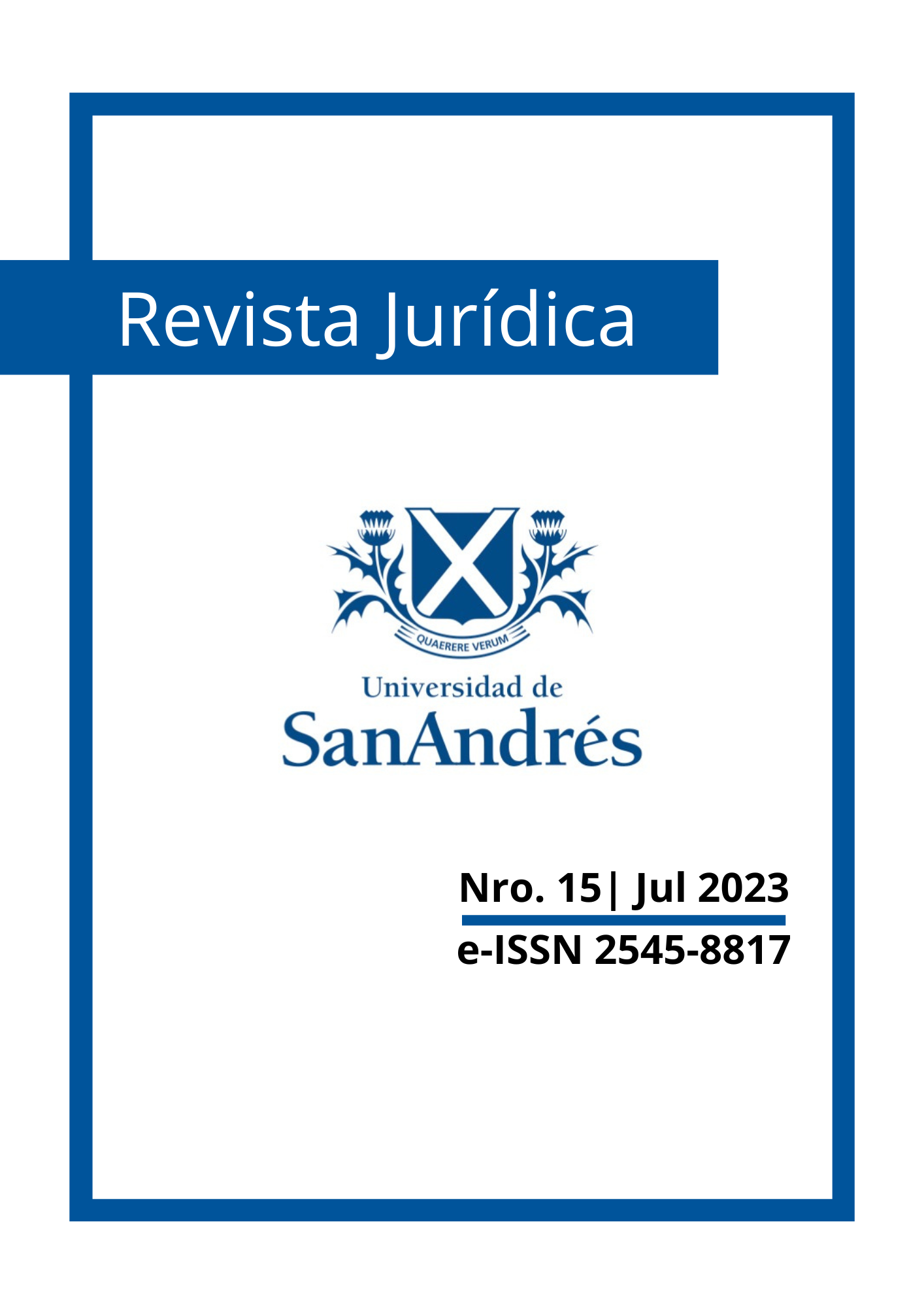The influence of technology on labor relations: a comparative analysis of teleworking
Keywords:
teleworking, labor modalities, Information and Communication Technologies (ICTs), employment contract, regulatory regulationAbstract
The purpose of this article is to conduct a thorough analysis of teleworking in the Argentine Republic, how it was implemented and the corresponding regulations. In the first place, we will provide a notion of teleworking and the subtle differences from other modalities such as "remote work", "homework" and "home-based work". Then, we will delve into the regulatory framework, with a focus on recent Law 27.555, that regulates teleworking in our country. In the second place, we will carry out a comparative analysis with other countries (Chile, Mexico, Ecuador, Uruguay, and Paraguay) to understand their legislation regarding teleworking and how the states have responded to this new contractual modality, that had its greatest boom from the covid-19 pandemic that set the agenda for 2020. Finally, we will try to provide an approximation about the reality of this not so new modality of work, which, although not entirely new, still has room for further development, in each of the countries mentioned. To achieve this, we will provide specific data on the existing number of teleworkers and their possible growth, considering the socioeconomic context and employment situation of these individuals.
Downloads
References
Albrieu, Ramiro, “Evaluando las oportunidades y los límites del teletrabajo en Argentina en tiempos de covid-19”, Programa de Desarrollo Económico, CIPPEC (2020): pp. 6-8.
Andrade Nieves, Marjorie Karina, Sanchez Valarezco Marvin Elvis, Mora Sánchez Norman Vinicio y González Ramon Ernesto Xavier, “El teletrabajo como una nueva tendencia de mercado laboral y su adaptación al código de trabajo”, Ciencia Latina, Revista Multidisciplinar 6, nro. 3 (2022): pp. 11-13.
Bosio, Rosa Elena, lineamientos básicos del derecho social, T. I (Argentina: Advocatus, 2019), p. 13.
Caminos, Juan Ignacio, “Algunos interrogantes surgidos a raíz del teletrabajo producto de la pandemia Covid-19”, Revista de Estudios de Derecho Laboral y Derecho Procesal Laboral, año 2, nro. 2.
Castillo Ortiz, María José y Pangol Alberto Mauricio, “El teletrabajo como nueva alter nativa laboral a la luz del sistema colombiano-ecuatoriano”, Pol. Con. (ed. nro. 66) 7, Nro. 1, (2022): pp. 200-202.
Digón Hernán, Mazzaro Patricio, Aguirre Daud Juan Manuel y González Táboas Pablo Rafael, “El teletrabajo ¿Nueva modalidad de trabajo o nueva forma de vida?”, Tecnología y Sociedad, Buenos Aires 9 (2020): pp. 96-97.
Ferreyra, Consuelo, y Vera, Ocampo Carolina, “El derecho a la desconexión digital. El teletrabajo: una necesidad”, Revista de Estudio de Derecho Laboral y Derecho Procesal Laboral, año 2, nro. 2 (2020): pp. 137-138.
Gómez Macfarland, Carla Angélica, “El teletrabajo, un estudio comparado”, Cuaderno de investigación Nro. 70, Instituto Belisario Domínguez, (2020): p. 4. Disponible en http://bibliodigitalibd.senado.gob.mx.
Guidi Moggia Caterina, Teletrabajo, trabajo a distancia y nuevas formas de organización, (Santiago de Chile: Academia Judicial de Chile, 2022), pp. 177-184.
Martínez Jorge, “La reforma en materia de teletrabajo en México”, Enfoques jurídicos, Revista Multidisciplinar del CEDEGS, ISSN 2683, nro. 04 (2021): pp. 78-79.
Ottaviano Juan Manuel, “Teletrabajo y cuidados”, Cuidados y mujeres en tiempos de COVID-19: la experiencia en la Argentina, Santiago, CEPAL (2020): pp. 151-176.
Ramírez Velásquez, J. C., Vega Abad, C. R., y Villagómez, M. N, “Ventajas y desventajas del teletrabajo en Sudamérica frente a la pandemia del covid-19”, Civilizar: Ciencias Sociales y Humanas (2022).
Remache Javier Darío Bósquez, Leny Cecilia Campaña Muñoz y Lady Nathaly Chica López, “El derecho a la desconexión digital en el contexto del teletrabajo, basado en la comparación de las distintas soluciones que ofrecen los diversos ordenamientos jurídicos”, Revista Conrado 18, S2 (2022): p. 486.
Salgado, Paula D., “El trabajo en la industria de la indumentaria: una aproximación a partir del caso argentino”, Trabajo y sociedad 18, [online ISSN 1514-6871], (2012): pp. 59-68.
Schteingart Daniel, Kejsefman Igal y Pesce Facundo, “Evolución del teletrabajo remoto en Argentina desde la pandemia”, Documentos de Trabajo del CEP XXI, nro. 5, Centro de Estudios para la Producción XXI - Ministerio de Desarrollo Productivo de la Nación, (2021): pp. 34-37.
Sepúlveda Magdalena, “La interpretación del Comité de Derechos Económicos, Sociales y Culturales de la expresión progresivamente”, en Ni un paso atrás: La prohibición de regresividad en materia de derechos sociales, comp. Christian Courtis, CEDAL/CELS (2006): p. 124.
Toselli Carlos Alberto, Derecho del Trabajo y de la Seguridad Social, T. I, 3° ed. corregida, ampliada y actualizada (Argentina: Alveroni), p. 18.
Published
How to Cite
Issue
Section
Categories
License
Copyright (c) 2023 Universidad de San Andres Law Review

This work is licensed under a Creative Commons Attribution 4.0 International License.










